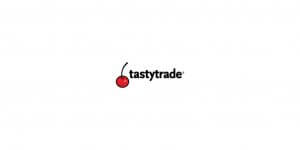Market Outlook: Focus turns to Central Banks with decisions and data due
AxiTrader’s Global Chief Market Strategist Stephen Innes takes a very analytical view of this week’s markets

By Stephen Innes, Global Chief Market Strategist, AxiTrader
Week Ahead
As we veer towards May, this week’s focus will turn to central banks again, with the Fed, ECB and BoJ all announcing their latest decisions on rates.
As well, and for key corporate guidance, earnings season will be closely monitored over the week ahead, with 173 of the S&P 500 companies reporting, including several big names.
And on the data side, the first peek at Q1 GDP for the US and the Euro Area will provide investors the dreaded reality check to the extent of the initial drops in output, while PMI releases and the weekly US jobless claims will be carefully analyzed for more recent developments as the data becomes more time accurate.
The Federal Reserve
This event is expected to be little more than a status report while providing an update on the Fed’s actions to date and the Committee’s evolving views about the economic outlook.
The European Central Bank
The ECB has turned on the taps, similar to the Fed, albeit with a more lukewarm reception to its €750bn Pandemic Emergency Purchase Programme, but there’s also been temporary collateral easing measures and moves to mitigate the impact of rating downgrades on collateral availability. However, the landscape remains extremely thorny, as evidenced by last week’s dispiriting EU composite PMI for April falling to a record low of 13.5, while sovereign bond spreads have continued to widen. So, there could still be a surprise or two from the ECB.
The Bank of Japan
The BoJ meeting could be the most interesting one of them all. It’s highly likely the bank will consider additional easing measures next week, with the most bandied around idea for them to increase its purchasing of commercial paper and corporate bonds.
Dueling GDPs
The first look at Q1 GDP readings will be closely watched, with the US reporting on Wednesday and the Euro Area following on Thursday. Economists are widely expecting contractions, though given the lockdowns only came into force from March, with the early part of the quarter unaffected, they will not display the full extent of the damage until the next quarter’s releases.
The PMIs: China the focus
The flash PMIs for April were worse than the March numbers, and even more dreary than expected with composite PMIs falling to record lows across several countries. However, on Thursday we’ll get the composite manufacturing and nonmanufacturing PMIs from China, which will give us an indication of how their economy has recovered as lockdown measures have been eased, and what that could mean for the rest of the world relaxing social restriction measures.
Earnings Season
We move into second gear with 173 companies in the S&P 500 reporting, along with a further 95 in the STOXX 600. Of the 120 S&P 500 companies that have reported so far, 67% have to say a positive surprise on earnings, and 65% have reported a positive surprise on sales.
Looking at the highlights, we can look forward to the following companies reporting this week:
- Monday: Adidas
- Tuesday: Alphabet, Novartis, Merck & Co., Pfizer, PepsiCo, HSBC, Starbucks, BP, Caterpillar, UBS, Santander, Ford.
- Wednesday: Microsoft, Facebook, Mastercard, AstraZeneca, American Tower, GlaxoSmithKline, Boeing, Volkswagen, General Electric, Daimler, Barclays, Samsung, Tesla.
- Thursday: Apple, Amazon, Visa, Comcast, McDonald’s, Amgen, Royal Dutch Shell, Gilead Sciences, Lloyds Banking Group, Nokia and Twitter.
- Friday: ExxonMobil, Chevron, Charter Communications, AbbVie, Honeywell International, RBS.
Oil market
There’s been a massive drop in open interest in the June 20 NYMEX. This is very much a result of the USO ETF being told by the CME to reduce the front-month delivery risk. This policy shift is to avoid another technical break down, and it makes sense as June contract night but un-deliverable with Cushing storage probably full.
If you’re looking to express a medium-term bullish view on oil this week, the proxies would be a better bet; CAD, NOK, or even the AUD – although the A$ is not typically described as a Petrol currency, it exhibits a powerful beta to oil risk.
We’re entering a point of infection as June contract settlement looms. And it could devolve into the silly season as markets are set to test global storage capacity in the next 3-4 weeks. This will likely create substantial volatility and possibly more spikes to the downside until supply finally equals demand; with nowhere to store the oil, supply has no other option but to be shut-ins.
But I’d caution on being overly bearish as risk management protocols suggest more rolls out of June into July could happen next week, meaning less settlement risk in June.
With that in mind, within around 4-8 weeks there could be a significant change in the situation as the OPEC+ cuts plus a combination of additional voluntary, forced and compensated shut-in gradually brings the market back to a state of normalcy.
Next week’s view (Brent only)
Brent has recovered from lows but remains about 23% below last Friday’s close after a week that showed just how bad things could get for oil.
Deeper cuts are needed to support oil prices, not because they fix the oversupply expected in 2Q but because they quicken the rebalancing expected in 3Q. This could provide a buffer as border lockdowns and travel restrictions would like to be the last to reopen after governments are convinced the curve has flattened, and the risk of secondary spread has receded.
It’ll be an uncertain time for the oil market, with data pointing toward accelerating inventory builds and storage moving closer to capacity.
Gold Markets
A couple of critical technical supports were breached last week – $1603 XAUEUR and $1725 XAUUSD – as the current leg higher came on the back of the gloomy EU and US data, which is bound to get worse. And the bounce was exacerbated by the situation in Europe; the talk of potential further government spending under an EU budget seems to be driving XAUEUR back to the all-time highs around 1600.
As far as the primary benchmark XAUUSD, all the bullish reasons to stay long gold in the medium term still apply – notably the considerable amount of money being printed by central banks and fiscal spending by governments to offset the economic impact of the coronavirus outbreak. Temporary deflationary concerns like the one triggered by the selloff in oil are one of the few things to worry about apart from the massive positioning as the markets merrily go along their way to $1800 on a path paved with gold bricks.
LIBOR is falling, signaling USD funding pressure is dropping, so is it time for the dollar to finally give way?
Currency Markets
The Australian Dollar
The Aussie will catch wings. Aussie currency has been on something of a tear recently, coming at the top end of the G-10 spectrum. There are a few things at work here.
With evidence that China is bottoming out, it would be reasonable to expect AUD to be one of the biggest beneficiaries. The meek level of iron ore inventories at Chinese ports has raised some hope that China might soon start re-stocking. Meanwhile, in Australia, recent changes to government rules allow workers to take funds out of their pension pots. There might, therefore, soon be something of repatriation of overseas cash into AUD.
The Euro
There’s a good case for the Euro to pop higher; Events are mostly out of the way, they were not Euro-supportive and yet EURUSD is holding in very well, suggesting the EU outcome was in the price.
Friday’s LIBOR fixing might have flown under the radar for some (0.88 from 0.99 the day before and 1.02 the day before that). The peak in LIBOR in 2008 was a signal that panic USD buying was done, and a few weeks later the USD fell precipitously. A good chunk of the USD buying since March has been of the global USD shortage variety and tumbling.
LIBOR is yet another signal that the shortage is dissipating.
Follow me on Twitter
I’m providing fundamental real-time analysis and an insider edge you won’t find elsewhere via Twitter: @steveinnes123
Find out more about AxiTrader here
The subject matter and the content of this article are solely the views of the author. FinanceFeeds does not bear any legal responsibility for the content of this article and they do not reflect the viewpoint of FinanceFeeds or its editorial staff.









